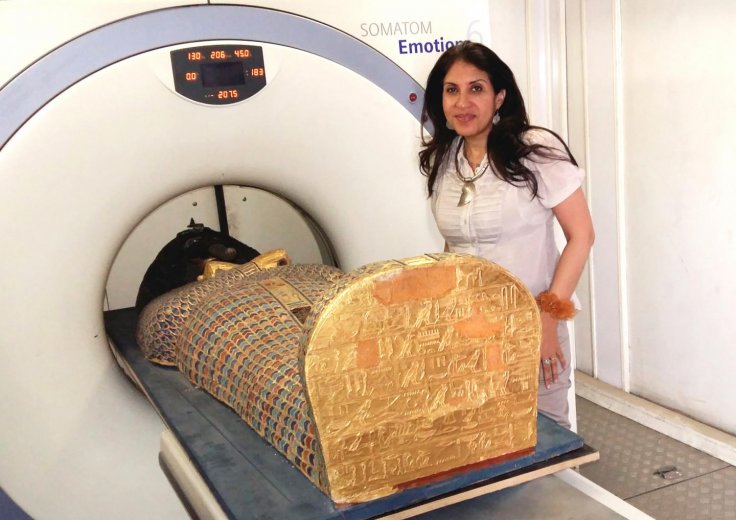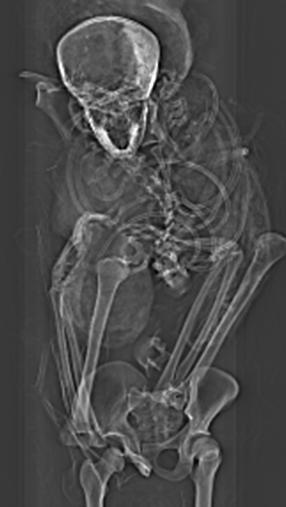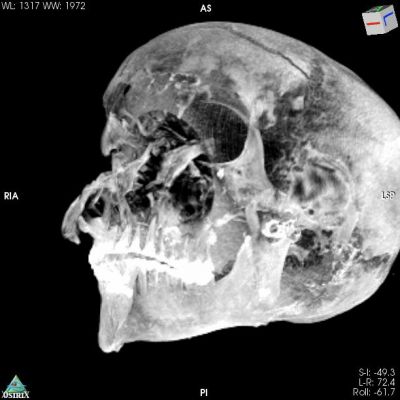Experts have studied an Egyptian pharaoh's mummy and found that the ancient ruler died on a battlefield after being attacked by daggers, axes and spears. A newly conducted computed tomography (CT) study has revealed the fatal wounds that led the researchers to find the deadly fate of pharaoh Seqenenre Taa II.
The scientists found that the pharaoh had a huge slice in his forehead, cuts around the cheeks, as well as eyes and a stab wound on his skull that may have reached the brain stem. They believe that the attackers might have surrounded the pharaoh on every side.
The lead author of this study, Sahar Saleem, a professor of radiology at Cairo University, stated: "This suggests that Seqenenre was really on the front line with his soldiers, risking his life to liberate Egypt."
This discovery is particularly important because even though experts found pharaoh mummies with violent wounds before, this is the first evidence of the battlefield death of a pharaoh.

Seqenenre Taa II and His Deadly Fate
Pharaoh Seqenenre Taa II was the ruler of Southern Egypt from about 1558 B.C. to 1553 B.C. He was the sitting emperor of the kingdom during the occupation of Egypt by the Hyksos, a Semitic people who gained a foothold in the region.
As per the papyrus accounts, the pharaoh revolted against the occupiers after he received a complaint from the Hyksos king that the noise of hippos in a sacred pool in Thebes—known to the ancient Egyptians as Waset—was disrupting his sleep. The king demanded the sacred pool be destroyed and the Pharaoh took it as an insult.
This incident may have triggered the war. According to the texts found on the carved rock slab in Thebes, Seqenenre Taa II's son and immediate successor, Kamose died during the battle against Hyksos. But no one knew what happened to the pharaoh, even after the discovery of his mummy in 1886.
Archaeologists found wounds on the skull of the mummy and speculated that Seqenenre Taa II had been killed in battle or perhaps murdered by the Hyksos. When his mummy was discovered, at that time, archaeologists reported a foul smell when they unwrapped it. This led those researchers to assume that the mummy had been hastily embalmed on the war field.
The New Revelation



In terms of the recent study, researchers used X-rays from multiple angles to build a 3D image of the mummy belonging to Seqenenre Taa II. Despite the poor condition of his remains, the wound on the skull of the pharaoh revealed the deadly story.
As reported, the experts noticed a 2.75-inch-long cut across his forehead, which would have been caused by a stroke from an ax or sword. They also found 1.25 inches long potentially fatal cut above the pharaoh's right eye that was 1.25 inches long. The researchers said that the study has revealed more cuts on the nose, right eye and right cheek.
Even though previously archaeologists had reported many of these wounds, Saleem and her colleague, Egyptologist Zahi Hawass, have found a new set of skull fractures.
The hands of the mummy were flexed and clenched. But there is no sign of defensive injuries on his forearms. So, the researchers believe that Seqenenre Taa II's hands were bound after his death.









